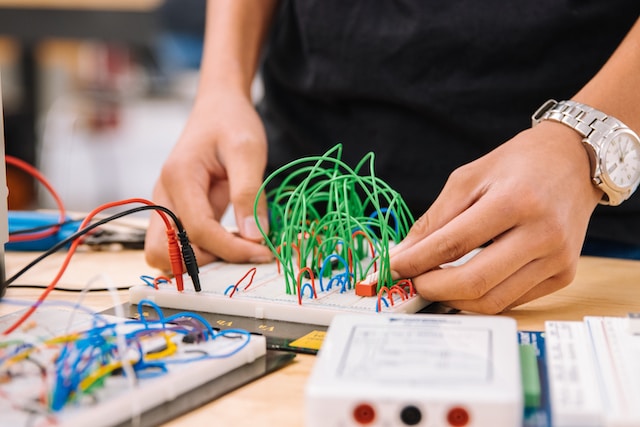How Unstructured Play Boosts Problem-Solving and Critical Thinking
In today’s technology-driven world, nurturing STEM (science, technology, engineering and math) skills at a young age is key for future success. According to studies, kids with exposure to engineering concepts through hands-on, imaginative play arrive at school better equipped for STEM-related learning. So how can we sow the seeds of analytical thinking and problem-solving early? The answer lies in tapping into children’s naturally imaginative nature. By allowing young minds space to create, design, test and fail, we instill critical lifelong skills that form a foundation for careers in engineering, science and beyond.

Open-Ended Construction Toys
Toys like blocks, Lego, Magna-Tiles and Lincoln Logs allow kids to build anything their minds envision without following set instructions. This type of play encourages:
- Creativity and imagination as they design structures, vehicles, etc.
- Spatial reasoning and shape recognition skills
- Fine motor development and dexterity
- Problem-solving as they work to balance, join pieces
- Persistence when pieces don’t initially fit
Give them a variety of block shapes and sizes to challenge their ingenuity. Then step back and let their innovation soar by building their own unique structures.
Science Kits and STEM Toys
Science kits and tech-based toys like robotics sets, circuit kits and magnifying glasses foster curiosity about how things work. Kids can tinker, test, and problem-solve through hands-on play. These types of toys teach:
- Cause and effect relationships from testing variables
- Trial and error and learning from failures
- Early coding/programming skills with robotics kits
- How everyday technologies function
Look for kits that suit your child’s age and let them experiment to gain an understanding of scientific principles through first-hand discovery.
Everyday Design Challenges
Pose fun engineering challenges using common household items:
- Build the tallest tower possible from spaghetti and marshmallows.
- Create a structure to protect an egg when dropped.
- Design a way to lift or move a heavy object across the room.
- Build a ramp/slide for a toy car from cardboard.
Let them design their own solutions focused on functionality rather than appearances. Failures become learning opportunities. When things don’t work, encourage them to analyze why and iterate on the design.
Storytelling and Imaginary Play
Make up engaging stories and scenarios requiring problem-solving:
- Going on a space mission and needing to build a rocket from toys
- Needing to create a bridge so stuffed animals can cross a river
- Helping dolls or action figures escape from a play structure prison
Then step back and let their imagination take over. Kids will use creativity to build props and design solutions as they act out the narrative.
Get Outside
Unstructured outdoor play provides unlimited possibilities for imagination and engineering skills to flourish:
- Building forts, houses or ships from sticks, logs or cardboard boxes
- Using pinecones, acorns, pebbles for sorting, patterning, construction
- Designing obstacle courses, pathways, mazes in dirt or snow
- Figuring out how to redirect or dam up streams
Fresh air and freedom to invent unconstrained by rules allows young minds to thrive.
Conclusion:
Nurturing our children’s natural curiosity and imagination builds crucial cognitive skills for future success in STEM fields. Allow them unstructured play time with toys and activities that spark ingenuity, problem-solving skills and critical thinking. Imaginative play elicits the trial and error, resilience and analytical abilities needed to excel in engineering, science and technical fields. So let their creativity run wild – the experience gained through inventing, designing and testing their own ideas will help cultivate the next generation of innovative thinkers.
